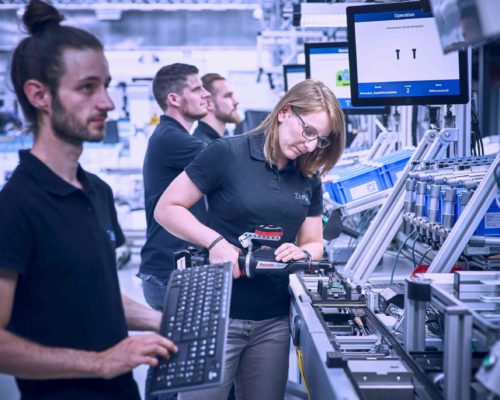
Problem
The assembly of different product types and variants, up to lot size 1, on one assembly system leads to frequent adjustments of the assembly line and thus to renewed commissioning and rescheduling processes. In addition, different variants represent a challenge for the worker in the assembly.
Objectives
By means of continuous information exchange between real and virtual assembly, a support of employees during planning and operation can be achieved.
Approach
A virtual planning environment for the acquisition of product, process and resource data as well as an intelligent worker guidance system for the display of the next assembly step with the corresponding activities are used. An agent-based control system for object-oriented control as well as localization technologies for the identification of changes in the real assembly provide additional support.
Areas of application
This technology is primarily used in electronic component assembly and by suppliers in value-added networks.

